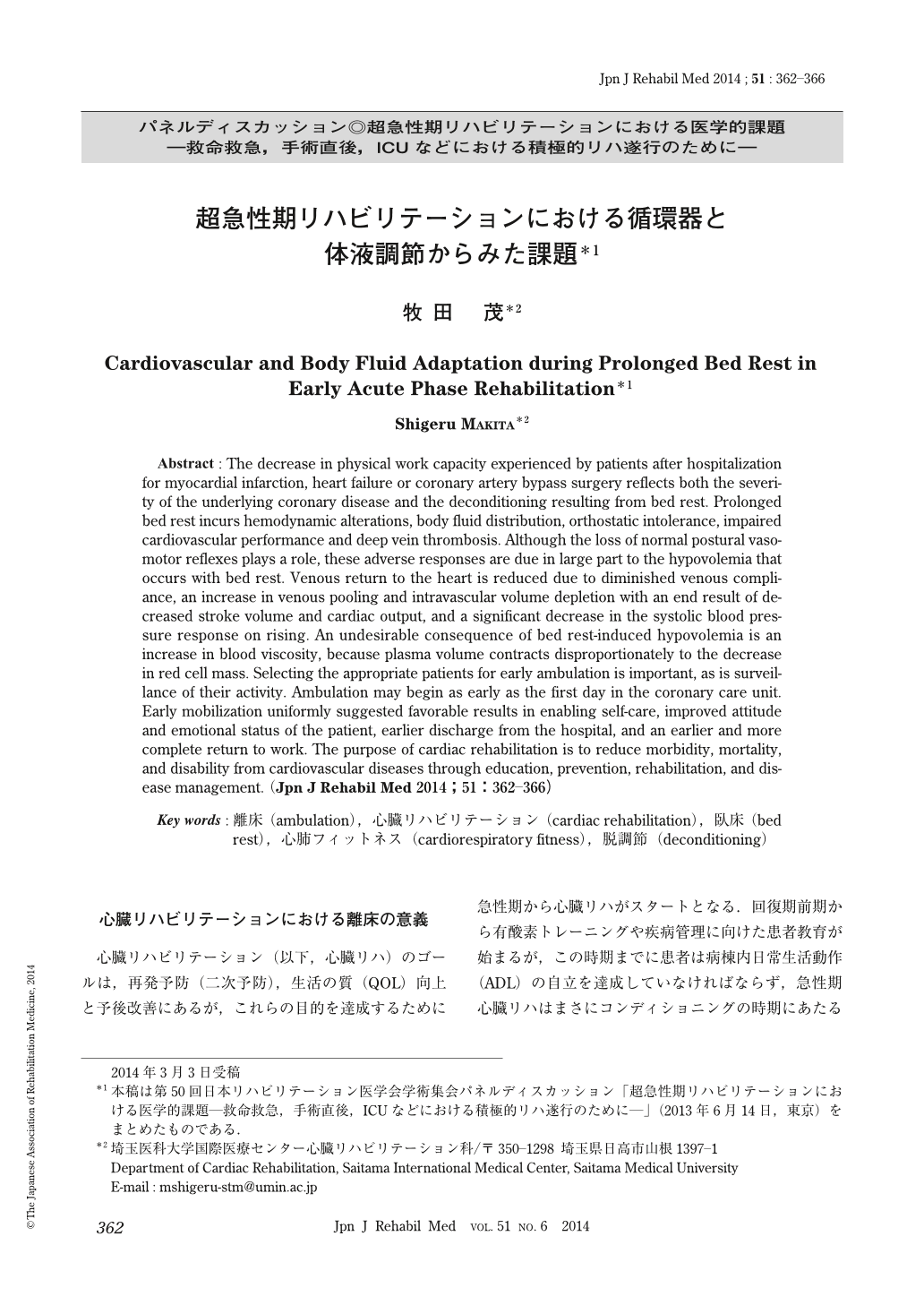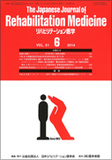Japanese
English
- 販売していません
- Abstract 文献概要
- 1ページ目 Look Inside
- 参考文献 Reference
心臓リハビリテーションにおける離床の意義
心臓リハビリテーション(以下,心臓リハ)のゴールは,再発予防(二次予防),生活の質(QOL)向上と予後改善にあるが,これらの目的を達成するために急性期から心臓リハがスタートとなる.回復期前期から有酸素トレーニングや疾病管理に向けた患者教育が始まるが,この時期までに患者は病棟内日常生活動作(ADL)の自立を達成していなければならず,急性期心臓リハはまさにコンディショニングの時期にあたると考えられる.したがって超急性期においては,できるだけ早期かつ安全に離床を開始することが必要となる.超急性期では循環管理と呼吸管理が重要であり,これなくして離床は成り立たない.
Abstract : The decrease in physical work capacity experienced by patients after hospitalization for myocardial infarction, heart failure or coronary artery bypass surgery reflects both the severity of the underlying coronary disease and the deconditioning resulting from bed rest. Prolonged bed rest incurs hemodynamic alterations, body fluid distribution, orthostatic intolerance, impaired cardiovascular performance and deep vein thrombosis. Although the loss of normal postural vasomotor reflexes plays a role, these adverse responses are due in large part to the hypovolemia that occurs with bed rest. Venous return to the heart is reduced due to diminished venous compliance, an increase in venous pooling and intravascular volume depletion with an end result of decreased stroke volume and cardiac output, and a significant decrease in the systolic blood pressure response on rising. An undesirable consequence of bed rest-induced hypovolemia is an increase in blood viscosity, because plasma volume contracts disproportionately to the decrease in red cell mass. Selecting the appropriate patients for early ambulation is important, as is surveillance of their activity. Ambulation may begin as early as the first day in the coronary care unit. Early mobilization uniformly suggested favorable results in enabling self-care, improved attitude and emotional status of the patient, earlier discharge from the hospital, and an earlier and more complete return to work. The purpose of cardiac rehabilitation is to reduce morbidity, mortality, and disability from cardiovascular diseases through education, prevention, rehabilitation, and disease management.

Copyright © 2014, The Japanese Association of Rehabilitation Medicine. All rights reserved.


